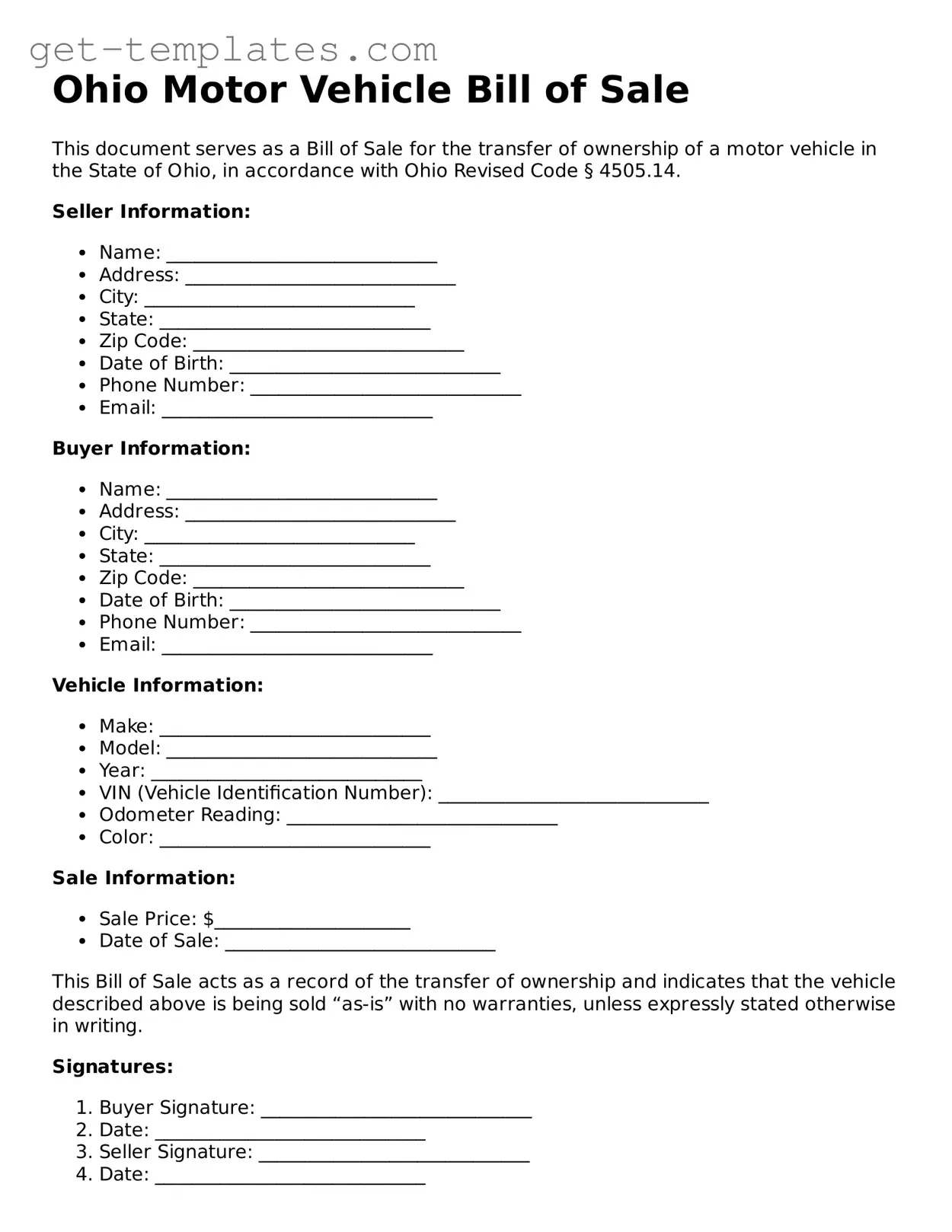When it comes to buying or selling a vehicle in Ohio, the Motor Vehicle Bill of Sale form plays a crucial role in ensuring a smooth and legally sound transaction. This document serves as a written record that details the transfer of ownership from the seller to the buyer, providing essential information such as the vehicle's make, model, year, and Vehicle Identification Number (VIN). Additionally, it captures the purchase price and the date of sale, which are vital for both parties involved. The form also includes spaces for the names and addresses of both the buyer and the seller, along with their signatures, thereby formalizing the agreement. By utilizing this form, individuals can protect themselves against potential disputes regarding ownership or the condition of the vehicle post-sale. Moreover, while the Bill of Sale is not required by law in Ohio for the transfer of ownership, having it can simplify the registration process with the Ohio Bureau of Motor Vehicles (BMV) and serve as a safeguard in case of future legal issues. Understanding the significance of this document is essential for anyone looking to navigate the complexities of vehicle transactions in the Buckeye State.
